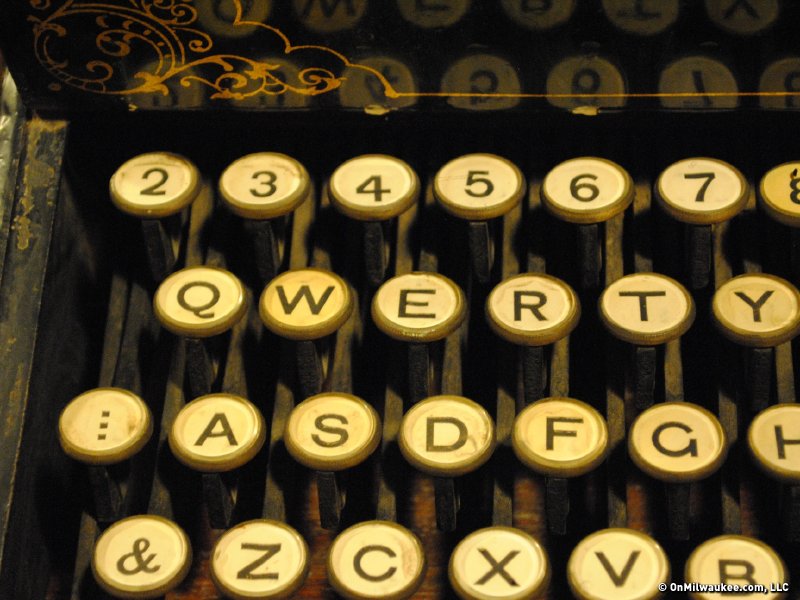Anyone who has visited the Milwaukee Public Museum (MPM) is aware of famous exhibits like The Streets of Old Milwaukee and the Native American dioramas (complete with the "secret" snake button). However, only 10 percent of the museum's 4.5-million-object collection is on display to the public. Most of the items are in storage.
According to Ellen Censky, the senior vice president and academic dean of the Milwaukee Public Museum, the fact that the MPM showcases 10 percent of its collection is impressive for a natural history museum.
"The primary purpose of a museum is to preserve the collection, not always for display but for research. Most natural history museums have about 4 percent on display. We do a great job putting our items on display," says Censky.
There are numerous reasons why such a large percentage of the museum's collections stay behind the scenes. Mostly, it's because of limited space along with the amount of research and staff power that goes into an exhibit. Plus, some objects are simply too old, delicate and sensitive to light to be on display.
Some of the museum's objects that aren't on public display include Native American collections, as well as an insect collection featuring more than one million insects, and fish, mammal, bird, botany, glass, ceramics and firearms collections.
There is also a large vintage typewriter collection featuring 876 typewriters. One of them is currently on display at the museum.
In 2010, the museum received a grant to restore the collection. In 2008, Chris Del Re, MPM's senior conservator, applied for a $250,000 federal grant to restore the typewriters. She received the grant in 2009. The restoration job, which involves cleaning and "stabilizing" the collection, will be completed in 2013.
Most of the typewriters were donated by Carl Dietz. Dietz, a former Milwaukee Alderman and Milwaukee Public Museum board member, was very interested in typewriters, mostly because the first usable QWERTY keyboard typewriter was invented in Milwaukee by Christopher Latham Sholes.
Dietz began collecting in 1934 and over the next 20 years, donated more than 400 typewriters to the museum. He died in 1957.
The oldest machine in the collection is the massive and heavy Jones mechanical typographer from 1853. The newest in the collection are Apples and IBMs from the '90s.
"We've got some real beasts, old and new," says Alyssa Caywood, a conservation project assistant.
About 20 different brands of typewriter are in the collection, including big names like Remington, Corona and Underwood. Some other unique typewriters in the collection include a Braille typewriter, a Korean and English typewriter, the world's smallest functional typewriter, a typewriter that types vertically instead of horizontally (this was supposed to make people type faster) and the "Crary" from 1892 which is circular in shape and one of three in the world. Also notable is an ornate gold-plated machine with mother-of-pearl keys that Edward VII presented to Queen Alexandra after their wedding.
Some of the older typewriters from the 1870s, like the Remington No. 1, look a lot like sewing machines because they were built in the same factories. Others, like the experimental Sholes' typewriter from 1868, look more like a piano.
MPM also stores a collection of 70 vintage bikes, most of which also belonged to Dietz. The earliest pieces came in around 1910 but the majority of the bikes were made between 1934 and 1954. The collection includes bicycles, tricycles, unicycles and two tandems, once of which seats eight riders.
There's little chance that the bikes will ever be on display to the public. One or two might appear in a diorama at the museum, but most likely not as a stand-alone exhibit. The bikes were damaged by a basement flood at the museum a few years ago, and are currently not in very good shape. The seat leathers are damaged and many are rusty.
"They are now in a dark space where we try to keep the humidity down and the temperature moderated," says Censky.
Also, Censky says that most of the museum's displays are life-scene dioramas, not collections of large groups of objects. She says the museum might be open to another organization raising the money to conserve the bikes and to show them in a space off-site from the museum. However, she says the vintage bicycle collection would most likely not qualify for a federal grant because it's not one of the country's best collections.
"But there's always a chance that the museum would display the bikes. We never say never," she says.
Molly Snyder started writing and publishing her work at the age 10, when her community newspaper printed her poem, "The Unicorn.” Since then, she's expanded beyond the subject of mythical creatures and written in many different mediums but, nearest and dearest to her heart, thousands of articles for OnMilwaukee.
Molly is a regular contributor to FOX6 News and numerous radio stations as well as the co-host of "Dandelions: A Podcast For Women.” She's received five Milwaukee Press Club Awards, served as the Pfister Narrator and is the Wisconsin State Fair’s Celebrity Cream Puff Eating Champion of 2019.







